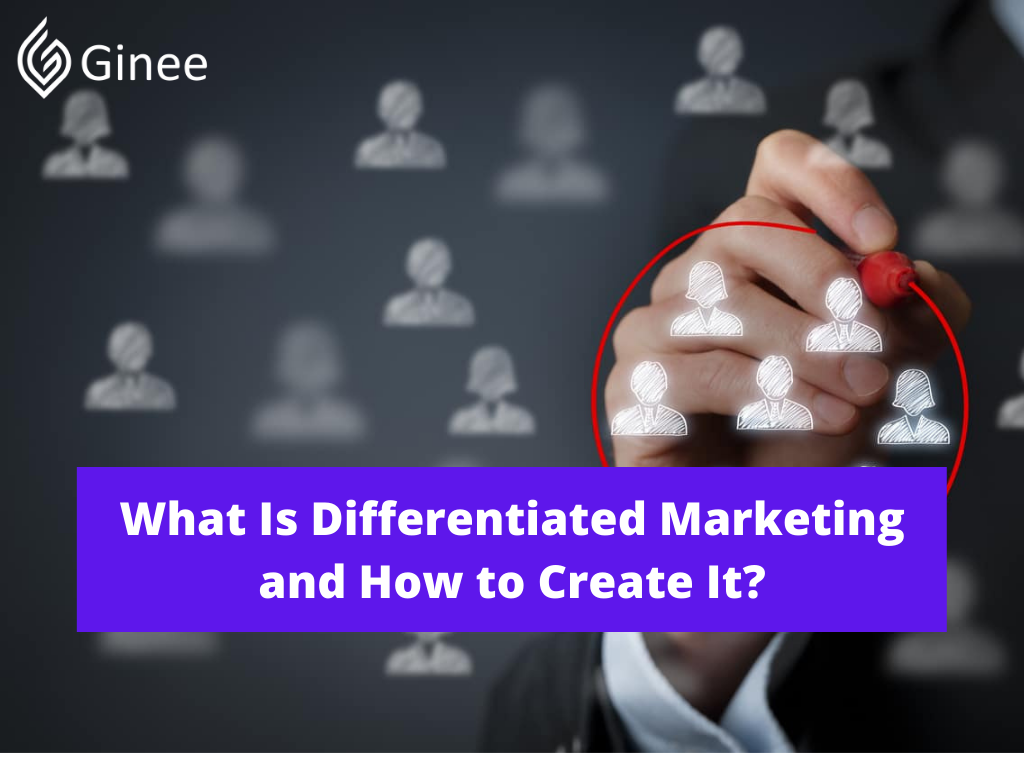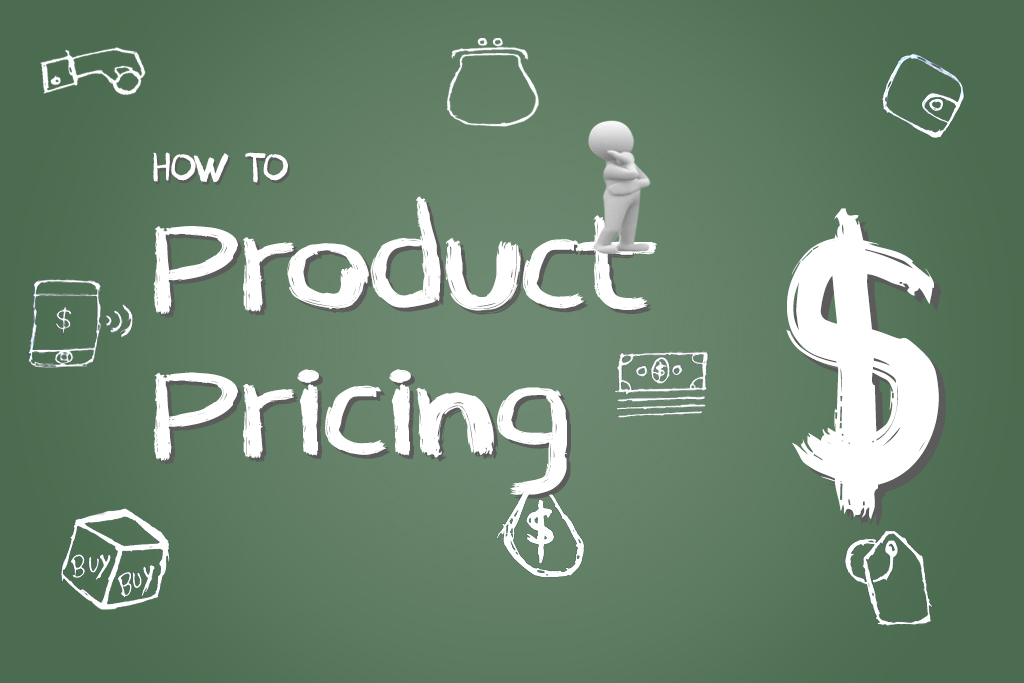
What is differentiated marketing? When businesses integrate a differentiated marketing strategy, they can appeal to more than one market and offer a range of products or services to fulfil each of their market’s needs.
In this article, that will discuss what differentiated marketing is, how it differs from other marketing types and how you can create a differentiated strategy for your products or services.
Your Selling Stock is Messing Up? You Need Help!
Ginee Omnichannel allow you to automatically sync every stock from all of your online stores. It’s faster way to helps you profit!
What is Differentiated Marketing?

Differentiated marketing strategy? Differentiated marketing strategies are aimed at two or more customer segments or markets. In differentiated marketing, businesses and brands typically use separate marketing approaches for their various audiences rather than a single marketing strategy aimed at one target market.
What is undifferentiated marketing? For instance, a health supplement brand might implement separate marketing strategies to reach seniors, pregnant women or children to provide different vitamin products to each age group. With differentiated marketing, businesses typically implement various strategies for each of their markets such as product offerings, price points or means of product distribution.
Read also: 23 Secret Formulas to Run a Successful Ecommerce Website
Advantages of Differentiated Marketing
Advantages of differentiated marketing? There are several key advantages for businesses that implement differentiated marketing. Differentiated marketing:
Fulfils a Range of Customer Needs

Businesses that use differentiated marketing can fulfil a range of customer needs, rather than appealing to one specific need. For instance, a dietary supplement brand can appeal to customers who need specific nutritional supplements like Vitamin B-12, in addition to children who may need only a general multi-vitamin. This ability to fulfil diverse needs makes differentiated marketing effective for businesses.
Expands Customer Reach

Businesses can reach more customers by differentiating their approaches to selling their products and services. For instance, a coffee shop can expand its customer base from commuting professionals to college students on a break between classes.
When businesses differentiate their marketing approaches and diversify offerings, they are able to reach a greater number of ideal customers.
Don’t Know How to Set Up Digital Ads? Don’t Worry!
Set up Google, Facebook, TikTok Ads, and more with Ginee Ads. The best part is you can do all of this in one place. Check it out now!
Increases Total Sales Revenue

Businesses can increase their revenue streams due to the advantage of offering their products and services to multiple markets. As a business’s revenue increases, so does its profitability. This is why many brands choose to diversify their advertising methods and develop a variety of offerings for their customers.
Enables Businesses to Adapt

Differentiated marketing can help businesses adapt to changes within their industries, to product demands and to the overall markets they appeal to. With more than one segment, product type and level of service, businesses can ensure future revenue even if one market becomes no longer viable.
Increases Competitive Advantage

Along with expanding market niches, differentiated marketing provides businesses with an advantage over competitors that market to only one or two select market niches. This can result in businesses beating out their competition because they are able to provide a diverse range of products or services that fulfil a range of needs.
Differences Between Differentiated, Undifferentiated and Concentrated Marketing
Examples of differentiated marketing? Differentiated marketing differs from undifferentiated and concentrated marketing in several key aspects including:
Target Markets

In differentiated marketing, businesses have two or more well-defined target markets they appeal to. In concentrated marketing, businesses usually appeal to only one well-defined market. In undifferentiated marketing, brands typically promote their products or services to a wide audience without specific parameters that define the market.
Product Pricing

Price points for products and services usually vary under a differentiated marketing plan. This can be due to a range of product offerings or levels of service for each target market.
With concentrated marketing, businesses typically provide a single product or service type at the same price. Brands that use undifferentiated marketing approaches will generally have a single price point for a limited amount of products or a limited range of services.
Product Offerings

In addition to the contrast in product pricing, the products or services businesses offer typically differ between marketing types. For instance, a business that uses differentiated marketing will have a larger selection of products or services to offer for each segment they reach and these products or services are unique to each market group.
In concentrated marketing, businesses generally have one product or service offering aimed at a select market group. Businesses using undifferentiated marketing may do so with a limited supply of products or a limited range of services that can appeal to many types of customers rather than a defined market group.
Read also: How Does Search Engine Marketing Work In the Marketing World?
Want to Put Digital Ads Everywhere Without Hassle?
Get the 360 digital marketing experience via Ginee Ads. Put your ads anywhere at any time, do them all in just one place!
How to Create a Differentiated Marketing Strategy
Concentrated marketing examples? The following steps provide a guide for creating a differentiated marketing strategy to appeal to your customer groups:
Narrow Your Target Markets

To differentiate your marketing, start by defining each target market you plan to reach. Identify key traits such as age, location, income bracket and additional demographics that specify who your market groups are.
Analyse the Needs of Each Market

After defining each of your market groups, determine the needs your products or services can fulfil for each market. For instance, you might create customer surveys that ask your target markets about products they favour or services that help them achieve something.
You can also use analytics to track data related to your customers’ purchasing habits, which can offer clear insight into the types of products and services your audience regularly buys.
Provide Offerings for Each Group

Once you have determined the needs of each marketing segment, you can develop your products or services to tailor those markets’ needs. For example, you might find that one of your target markets frequently purchases organic cleaning materials. Knowing this, you can develop more natural or organically-derived offerings for this group.
Identify Promotional Outlets

After you define your audience and have identified their needs, determine which promotional outlets to use to reach your market groups.
For instance, if one of your target groups spends most of its time on social media platforms, you can develop promotional and advertising materials to distribute on those platforms. Additionally, when you identify the promotional outlets that your markets commonly visit, you can have a better idea of how to design your marketing materials for distribution.
Distribute Marketing Materials

Develop and distribute your advertisements on the platforms your target audience uses. For instance, you can create social media advertisements, content marketing strategies for blog posts or videos and podcasts to educate your customers on your products or services.
Do You Want to Manage Multiple Marketplace Just by Single Person?
Of course you can! You can handle multiple stores from all marketplace just by single dashboard. Cut your Business’s cost, and Boost your Efficiency at the same time.
Conclusion
Disadvantages of differentiated marketing? Since the marketing groups are highly defined, the restaurant is able to fulfil multiple segment needs with their services. As the business grows, the restaurant owner can identify additional markets to reach.
Additionally, to stay updated on what their customers want, the restaurant uses surveys that provide valuable insight into what appeals most to their customers.
How to Manage Online Sales with Ginee?

- Do you spend too much time copying things while selling them across many channels?
- Do you wish to find a more efficient approach to manage orders when selling on multiple platforms online?
- Do you have any ideas on how to deal with customers when there are too many orders?
Use Ginee Philippines to reduce the management burden when selling right now. Ginee is an online sales management software that applies the Omnichannel model to help sellers easily sell multi-channel products more smoothly. When using Ginee, you will get:
- Product administration is simplified by adding new goods, bulk editing, and updating all sales channels at the same time.
- You can easily manage orders from the time you get the order, plan for shipment, and print the labels until the buyer receives the things.
- By looking at payment history, ordered products, and purchasing trends, managing consumers allows you to have a better knowledge of your customers.
Sign up for a free 7-day trial today to not miss this big opportunity!


 Ginee
Ginee
 30-12-2021
30-12-2021



